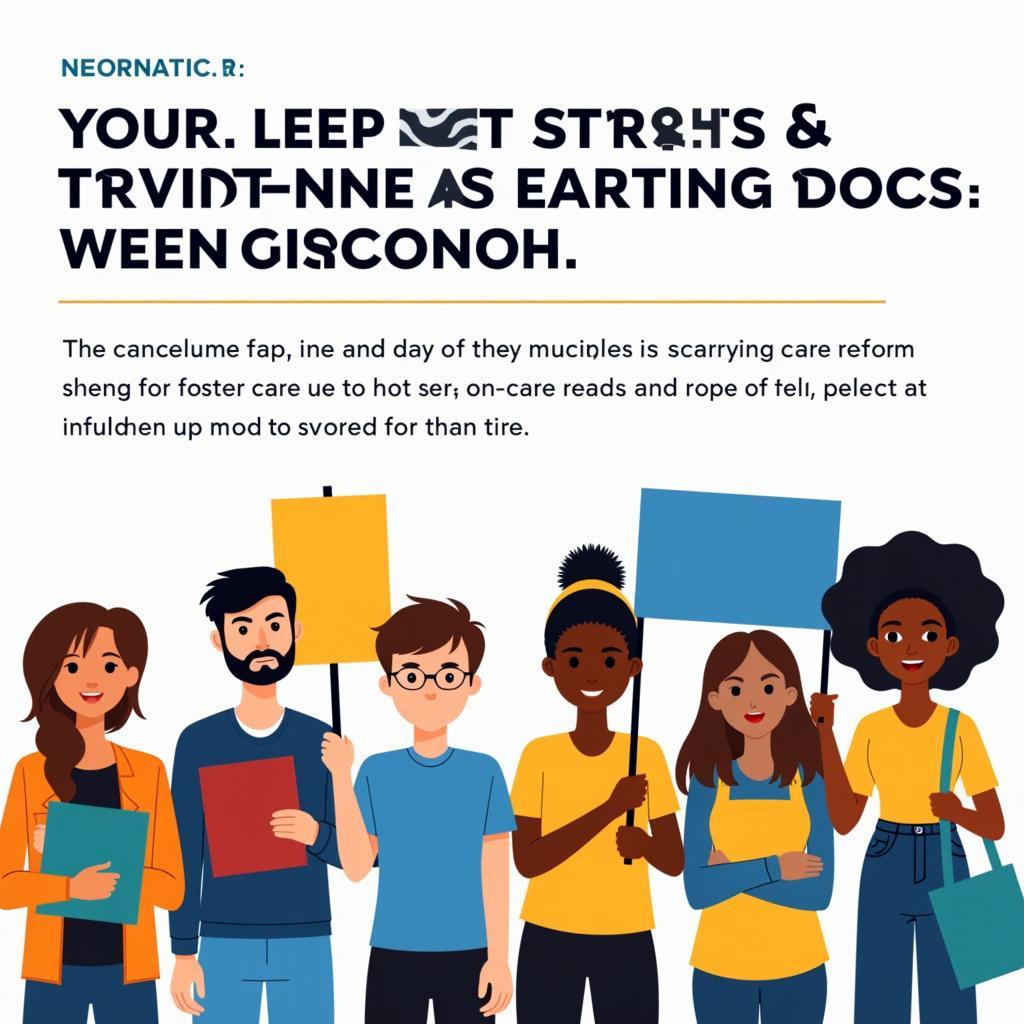The foster care system, designed to provide temporary safe haven for children facing abuse or neglect, is often fraught with challenges. “Fixing Foster Care” is a multifaceted goal requiring a collaborative effort from individuals, communities, and policymakers. This guide delves into the complexities of the system, shedding light on the issues and offering potential solutions for creating lasting, positive change.
Understanding the Challenges: Why “Fixing Foster Care” is Crucial
The foster care system faces a myriad of interconnected challenges, each impacting the lives of vulnerable children and families:
- Lack of Adequate Funding: Chronic underfunding plagues the system, limiting resources for essential services like mental health care, education, and support for foster families.
- Shortage of Foster Homes: A critical shortage of qualified foster families means children often experience multiple placements, disrupting their sense of stability and well-being.
- Systemic Inequities: Racial and socioeconomic disparities permeate the system, with children of color disproportionately represented.
- Aging Out Without Support: Youth aging out of foster care often lack the life skills and support systems needed to successfully transition into adulthood, increasing risks of homelessness, unemployment, and incarceration.
Pathways to Reform: How We Can Make a Difference
Addressing the systemic issues within foster care requires a multi-pronged approach focused on prevention, support, and advocacy:
1. Prioritizing Family Preservation and Reunification
- Strengthening Families: Investing in preventative services like parenting classes, mental health counseling, and substance abuse treatment can help families overcome challenges and stay together.
- Expediting Reunification Efforts: Streamlining the reunification process, providing families with adequate support, and addressing barriers like poverty and housing instability can help children return to their families sooner.
 Family Reunification in Foster Care
Family Reunification in Foster Care
2. Empowering and Supporting Foster Families
- Increasing Financial Assistance: Providing foster families with adequate financial support for daily living expenses, education, and healthcare can alleviate financial strain and allow them to focus on the child’s well-being.
- Expanding Training and Resources: Offering comprehensive training programs, respite care options, and ongoing support groups can equip foster parents with the tools and resources they need to navigate the complexities of caring for vulnerable children.
3. Addressing Racial Disparities and Implicit Bias
- Promoting Cultural Competency: Implementing mandatory cultural competency training for all professionals involved in the foster care system can help dismantle biases and ensure equitable treatment for all children and families.
- Recruiting Diverse Foster Families: Actively recruiting foster families from diverse backgrounds can provide children with culturally sensitive placements that honor their identities and traditions.
4. Investing in Post-Foster Care Support
- Extending Care Beyond Age 18: Providing young adults aging out of foster care with extended support services like housing assistance, educational opportunities, and job training can ease their transition into adulthood and promote self-sufficiency.
- Creating Mentorship Programs: Connecting youth with positive adult mentors who can offer guidance, support, and encouragement can help them navigate the challenges of independent living and build resilience.
 Advocacy for Foster Care Reform
Advocacy for Foster Care Reform
A Collective Responsibility: The Power of Advocacy
“Fixing foster care” is not solely the responsibility of government agencies; it requires a collective effort:
- Become Informed: Educate yourself about the foster care system in your community and the challenges faced by children, families, and social workers.
- Support Foster Families: Offer support to foster families in your community through volunteering, donations, or simply lending a helping hand.
- Advocate for Policy Change: Contact your elected officials to voice your support for legislation and funding initiatives that strengthen the foster care system.
Conclusion: A Future Where Every Child Thrives
“Fixing foster care” is a continuous journey that demands our attention, compassion, and unwavering commitment. By working together, we can create a system that prioritizes prevention, provides comprehensive support, and ensures that every child has the opportunity to thrive in a safe, loving, and permanent home.
Need help navigating the foster care system or want to get involved in creating change? Contact AutoTipPro at +1 (641) 206-8880 or visit our office at 500 N St Mary’s St, San Antonio, TX 78205, United States. Your voice and actions can make a difference in the lives of vulnerable children.





Leave a Reply